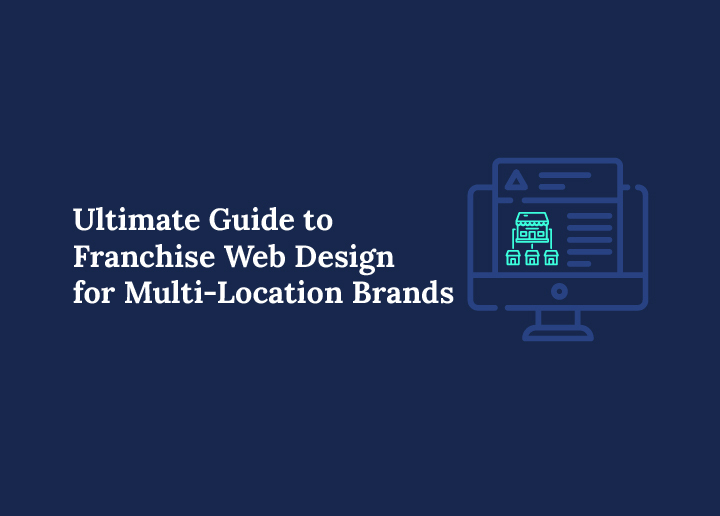In today’s digital age, a strong online presence isn’t just an advantage; it’s a necessity, especially for multi-location brands. This presents a unique challenge for franchise businesses: How do you maintain a unified brand identity while empowering individual franchise locations to connect with their local audience? Strategic franchise web design is the cornerstone of your digital success.
This comprehensive guide will demystify franchise web design, offering insights for everyone from franchisors and franchisees to brand marketing teams, web developers/designers, and digital agencies. We’ll explore the intricate balance required to build effective franchise websites that drive business growth, enhance brand recognition, and generate leads at both national and local levels. You’ll learn how to leverage web design services to create a cohesive yet adaptable online presence, ensuring your brand resonates with customers wherever they are.
Understanding the Franchise Web Ecosystem
The world of franchise web design isn’t a one-size-fits-all solution. It’s a complex ecosystem with distinct needs and goals that must be carefully balanced.
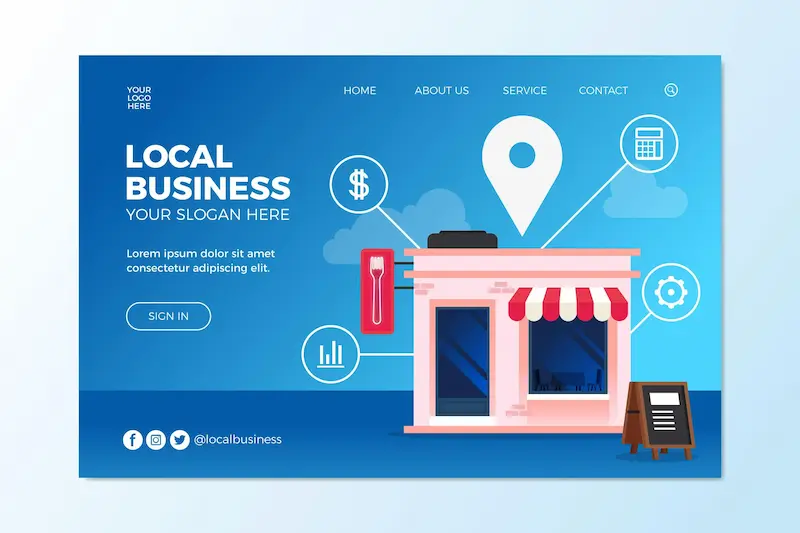
Dual Goals: Franchisor vs. Franchisee Perspectives
Effective franchise web design must address the often divergent yet ultimately complementary needs of the franchisor (the head office) and the individual franchisees.
Franchisors need:
- Brand Integrity: The paramount need is maintaining a consistent brand identity. This means ensuring that every franchise website reflects the central brand’s colors, fonts, imagery, and messaging. This builds trust and strengthens brand recognition across all franchise locations.
- SEO Scalability: A centralized search engine optimization (SEO) strategy is crucial for national visibility. The web design must allow for scalable SEO efforts that benefit all franchise locations, pushing the overall brand higher search rankings.
- Centralized Analytics: To make data-driven decisions, franchisors require a holistic view of website performance across the entire network. This means centralizing analytics integration to track visitors, conversions, and engagement across all franchise websites.
- Lead Funnels: The franchisor’s website needs clear lead generation funnels for new franchisees or customers that convert visitors into valuable leads.
Ready to Elevate Your Franchise Brand Online?
Unlock the full potential of your multi-location business with our expert Franchise Web Design and Development services.
Franchisees need:
- Local Leads: A franchisee’s primary goal is to generate sales and leads within their specific market. Their website needs to be optimized for local search, attracting nearby customers.
- Autonomy to Update Promotions: While adhering to brand consistency, franchisees require some freedom to update local promotions, special offers, and relevant news to their specific location. This helps them capitalize on regional opportunities.
- Unique Local Content: Franchisee websites benefit from exceptional, localized content to stand out. This could include information about local team members, community involvement, or specific services tailored to their area.
- Simple Tools: Franchisees are often busy running their businesses. They need simple, intuitive tools to manage their website’s local content without requiring extensive web design or technical expertise.
Read Further: Best Digital Marketing Strategies for Local Businesses
Pillars of Effective Franchise Websites
Achieving the dual goals of franchisors and franchisees rests on several fundamental pillars of effective franchise websites:

- Unified Branding and Local Customization: This is the golden rule of franchise web design. The site must unmistakably belong to the overarching brand while offering designated space for local flair and unique offerings. Think of McDonald’s as a global brand with localized menu items.
- SEO-First Architecture (National & Local): The website’s structure must be built with search engine optimization in mind from the outset. This means planning for national keywords representing the overall brand and particular local keywords capturing nearby customers.
- User Experience (UX) and Mobile-First Design: A seamless user experience is paramount. The website must be intuitive to navigate, easy to read, and perform flawlessly on all devices, especially mobile phones, given the prevalence of mobile search. Responsiveness isn’t optional; it’s fundamental.
- Scalable CMS and Analytics Integration: A robust Content Management System (CMS) is essential to manage multi-location content efficiently. It must be scalable, allowing for easy addition of new franchise locations, and integrate seamlessly with analytics systems to provide actionable data.
- Data-Driven Decision Making: Relying on data rather than assumptions is key. The website should be set up to collect data on user behavior, conversion rates, and traffic sources, enabling constant optimization and improvement.
Why Seahawk Media is Your Ideal Partner in Franchise Web Design
For franchise brands navigating the complexities of multi-location digital presence, choosing the right web design services partner is crucial.

Seahawk Media offers specialized expertise in franchise web design. We understand the unique needs of both franchisors and franchisees. Our team excels at building franchise websites that flawlessly balance brand consistency with localized marketing flexibility.
We approach every project with an SEO-first architecture mindset, ensuring your franchise locations achieve maximum visibility in national and local search results. Our web design solutions are built on scalable platforms like WordPress, providing head office control while empowering franchisees with easy access to manage local content and promotions.
We don’t just create beautiful websites; we develop high-performing digital assets designed for lead generation, enhanced user experience, and measurable business growth. With a deep understanding of the franchise ecosystem, Seahawk Media is committed to delivering results that propel your brand forward.
Strategic Planning & Scalable Site Architecture
Before any design or development begins, strategic planning is vital for a successful franchise website. This lays the foundation for a scalable and effective online presence.

Defining Goals and User Personas
Understanding who you’re trying to reach and what you want them to do is the first step in web design.
- Franchisee Recruitment vs. Customer Conversion: These are distinct business goals with different user experience paths. A potential franchisee will seek information on investment, training, and business growth potential. At the same time, a customer will seek product or service details, location information, and ways to contact or purchase.
- Example Personas: Creating detailed personas helps to visualize your audience.
- “Franchisee Alex”: An aspiring entrepreneur who is tech-savvy, researching investment opportunities, looking for detailed financial information, support systems, and training.
- “Customer Carla”: A resident who is busy looking for specific services or products, often on her mobile device, seeking quick access to location hours, directions, and reviews.
- “Franchisee Alex”: An aspiring entrepreneur who is tech-savvy, researching investment opportunities, looking for detailed financial information, support systems, and training.
- Mapping User Journeys: Once personas are defined, map their typical journey on your website. Every step should be optimized from initial discovery through search or social media to conversion (e.g., filling out a franchise inquiry form, booking an appointment, or finding a location). This impacts UX and funnel design.
Read More: Mapping the Stages and Strategies for B2B Customer Journey
Choosing the Right Web Architecture for Franchise Web Design
How your multi-location content is organized fundamentally impacts SEO, user navigation, and ease of management.
Recommended:
- Subfolders (e.g.,
yourbrand.com/locations/city-name): This is often the best and most recommended approach for franchise businesses.
- Pros: All pages reside on the same root domain, consolidating SEO authority. This strengthens the entire website’s search ranking. It’s generally easier to manage centrally and ensures consistent brand messaging. Google often prefers this structure for showing local results.
- Cons: Less autonomy for franchisees over their specific URL.
Pros/Cons of Other Structures:
- Subdomains (e.g.,
city-name.yourbrand.com): It can offer more perceived autonomy for franchisees but may dilute SEO authority, as search engines might treat them as separate sites. It is more complex to manage holistic SEO.
- Microsites: Separate, smaller websites are often used for specific campaigns or unique local offerings. They are suitable for short-term marketing, but it can be hard to maintain brand consistency and SEO across many.
- Independent URLs (e.g.,
yourbrandcity.com): Each location has its unique domain. Offers maximum autonomy but is a nightmare for brand consistency, centralized management, and leveraging shared SEO authority. Generally not recommended for typical franchise brands.
Navigation Hierarchy and SEO Implications: A logical, clear navigation structure is vital. Mega menus can help organize a large number of pages. For franchise web design, ensure that access to location finders and local pages is prominent. How pages are linked internally contributes significantly to SEO by distributing “link juice” and indicating content hierarchy.
The Power of the Right CMS
The Content Management System (CMS) is the backbone of your franchise website. Choosing the right platform is critical for scalability, ease of use, and long-term success.
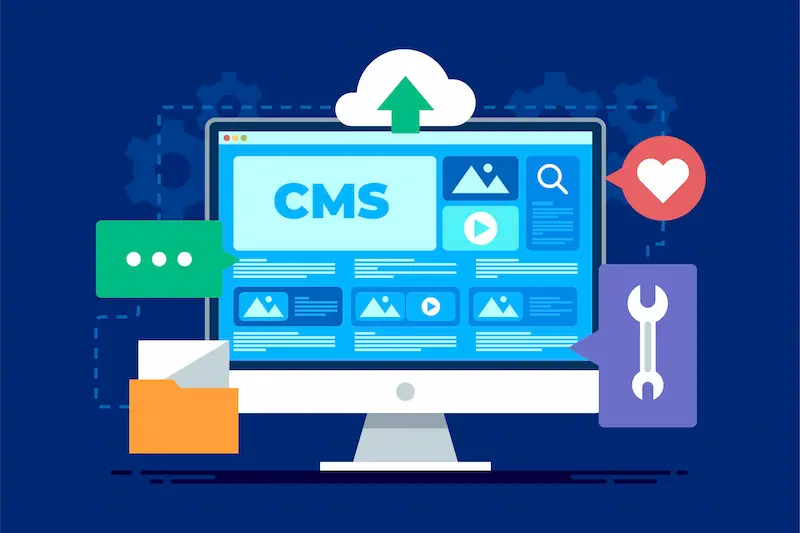
Must-Have CMS Features for Franchise Brands:
- Role-Based Access (Franchisor vs. Franchisee): This is paramount. The franchisor team needs full control over global brand content and structure. In contrast, franchisees need limited, defined access to update their specific location pages with promotions, hours, or local news, without risking brand identity breaches.
- Brand Compliance Tools: The CMS should have features or integrations that enforce brand guidelines, ensuring consistency in color schemes, fonts, and imagery. This prevents franchisees from veering off-brand.
- CRM and Analytics Integration: Seamless integration with your Customer Relationship Management (CRM) systems and analytics platforms (like Google Analytics 4) is crucial for lead management, customer tracking, and performance reporting.
Read Further: Website Design Guide for Professional Web Designers
Design for Brand Consistency and Local Relevance
Effective franchise web design masterfully blends a unified brand presence with elements that resonate locally. It’s about ensuring every location feels like part of the same family while having its distinct personality.
Visual Brand Identity & UX Consistency
Visuals are often the first thing people notice. A strong, consistent brand identity across all franchise websites builds trust and instant recognition.
- Adhering to Style Guides: This is non-negotiable. Strict adherence to established brand style guides for logos, colors, fonts, and graphic elements ensures every site looks and feels like part of the same brand.
- Component-Based Design Systems: Using a system of reusable UI (User Interface) components (e.g., standardized buttons, form fields, navigation elements) ensures consistency and speeds up development. This makes deploying new pages or locations with the same look and feel easy.
- Consistent Layout Templates Across Locations: While local content may vary, the underlying layout of pages (e.g., header, footer, sidebar, main content area) should remain consistent. This familiarity helps users navigate between different franchise locations.
Mobile-First and Responsive Franchise Web Design
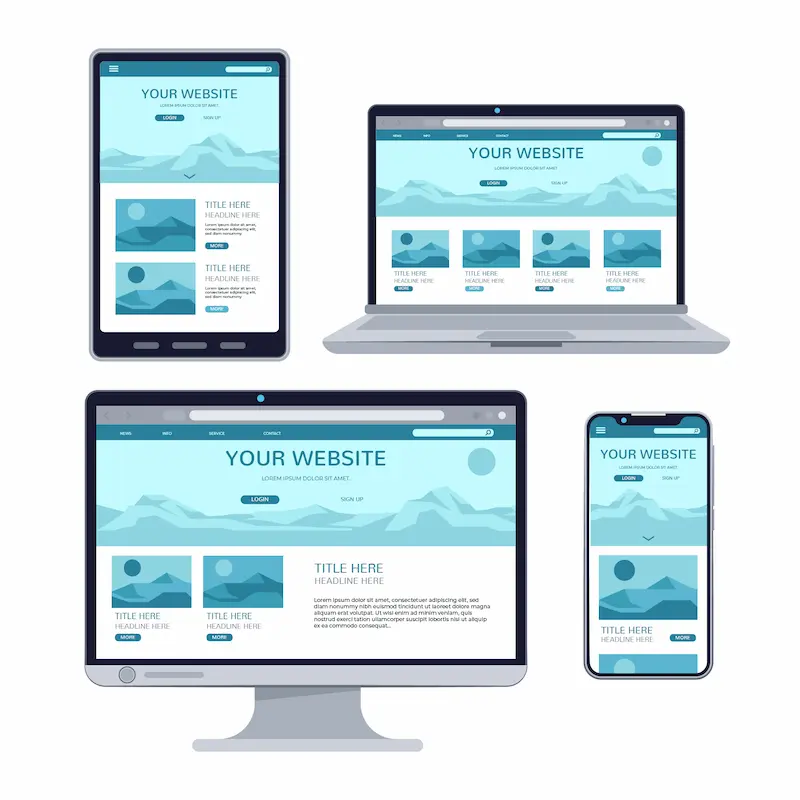
With most people accessing websites on mobile devices, a mobile-first approach is no longer a trend; it’s a fundamental requirement for any modern web design project.
- Core UX Behaviors on Mobile: Prioritize touch-friendly elements, easy-to-read fonts, and concise content. Think about how users scroll, tap, and interact with forms on a smaller screen.
- Optimizing Touch-Based Navigation, Speed, and CTAs: Buttons and links must be large enough to tap easily. Website speeds are critical for mobile users, so optimizing images and code is key. Calls-to-action (CTAs) should be prominent and easily accessible.
Smart Navigation for Diverse Users
A well-thought-out navigation system is the backbone of a positive user experience, especially on a multi-location website.
- Mega Menus and Local Site Finders: For franchise businesses with many services or locations, mega menus can help organize vast information without overwhelming users. A prominent location finder (ideally with geo-location detection) is essential, allowing users to find the nearest franchise quickly.
- Search Functionality, Breadcrumbs, and Footer Design: A robust search bar helps users find specific information. Breadcrumbs provide clear navigational paths, enhancing user experience on deeper pages. The footer should contain essential links like privacy policies, contact information, and social media.
- UX Best Practices for Large Site Hierarchies: Ensure the navigation remains intuitive, even as the website grows. Use clear labels and logical grouping of pages to prevent users from getting lost.
Multimedia and Visual Engagement
Visual content is powerful. It grabs attention, tells a story, and makes the website more engaging.
- Corporate vs. Local Photography: Use high-quality professional photography. The head office provides corporate imagery that aligns with the overall brand, while franchisees can contribute local photos showing their specific location, team, and community involvement. This adds a personal touch.
- Location Videos, UGC, Staff/Team Bios: Short videos showcasing a franchise location or services can be highly effective. User-Generated Content (UGC), such as customer reviews with photos, builds authenticity. Individual franchisee websites should include bios and pictures of local staff to build rapport.
- Infographics, Virtual Tours: Infographics can simplify complex information (e.g., the franchise opportunity process). Virtual tours can give potential customers a feel for a location before they visit, enhancing their experience.
Content Strategy for Corporate & Local Success
An effective content strategy is crucial for franchise businesses. It involves balancing broad brand messaging with highly localized storytelling to engage diverse audiences.

Balancing National and Localized Content
A well-executed content strategy for franchise web design ensures the overall brand and individual franchise locations have compelling narratives.
What Should Be Centralized vs. Local:
- Centralized: Core brand values, overarching services or products, franchise opportunity details, national news, investor relations, and general FAQs. The franchisor’s head office manages this content.
- Localized content includes local promotions, community events, staff profiles, unique local offerings, customer testimonials specific to that location, and news relevant to the local market. This content empowers franchisees to connect with their community.
Content Approval Workflows and Governance: To maintain brand consistency while allowing local input, establish clear workflows for franchisees to submit or suggest local content for approval by the head office. This prevents off-brand messaging and ensures quality.
Blogging & Local Content Hubs
Blogging is a powerful SEO and engagement tool for franchise businesses.
- National Blog (Franchisee Success, Industry Insights): The franchisor’s blog can focus on broader topics like industry trends, franchisee success stories, tips for business growth, or insights into the brand’s mission. This attracts potential franchisees and establishes industry authority.
- Local Blog (Community Stories, Local Guides, Events): Each franchise location can have a section for local content, acting as a “local blog” or content hub. Here, franchisees can share community involvement, local guides (e.g., “Best Coffee Shops in [City] – and Ours!”), event recaps, or local customer spotlights.
- Pillar and Cluster Strategy for Topic Authority: Organize your content around “pillar” pages (comprehensive guides on broad topics) and “cluster” content (individual blog posts that delve into specific aspects of the pillar topic, linking back to it). This strengthens topical authority for both national and local SEO.
Know More: How To Make A Blog With WordPress
Social Proof & Trust Signals
People trust what other people say. Integrating social proof is crucial for building credibility.
- Reviews, Testimonials, UGC, Case Studies: Prominently showcase positive customer reviews. Feature testimonials (text and video) from satisfied customers and even successful franchisees. Encourage user-generated content (UGC), such as photos or videos. Detailed case studies can be powerful for B2B franchises (e.g., commercial cleaning).
- Press Mentions, Awards, Security Seals: Display any press coverage, industry awards, or certifications. Security seals (e.g., SSL certificates, payment gateway trust badges) build confidence, especially on e-commerce parts of the site.
High-Converting Content Elements
Beyond general information, specific content elements are designed to drive action and generate leads.
Lead Capture Forms, Smart CTAs, Quizzes:
- Lead Capture Forms: Streamlined and easy-to-fill forms for franchise inquiries or service bookings. Minimize required fields to reduce friction.
- Smart CTAs are calls to Action that change based on the user’s location, past behavior, or whether they’re a potential franchisee or customer.
- Quizzes: Engaging quizzes (e.g., “Are you ready to own a franchise?”) can qualify leads and provide value to users.
Optimized Franchise Inquiry Pages: For potential franchisees, dedicated pages outlining the investment, training, support, and business growth potential are crucial. These pages should have clear CTAs for inquiry.
Local Service Landing Pages with Embedded Reviews or Maps: Each specific service a location offers should have its own optimized landing page. Embedding Google Maps and local customer reviews directly on these pages reinforces local relevance.
WordPress for Franchise Web Design
Given its popularity and flexibility, WordPress is often the chosen platform for franchise web design. Understanding its specific features can provide a distinct advantage.
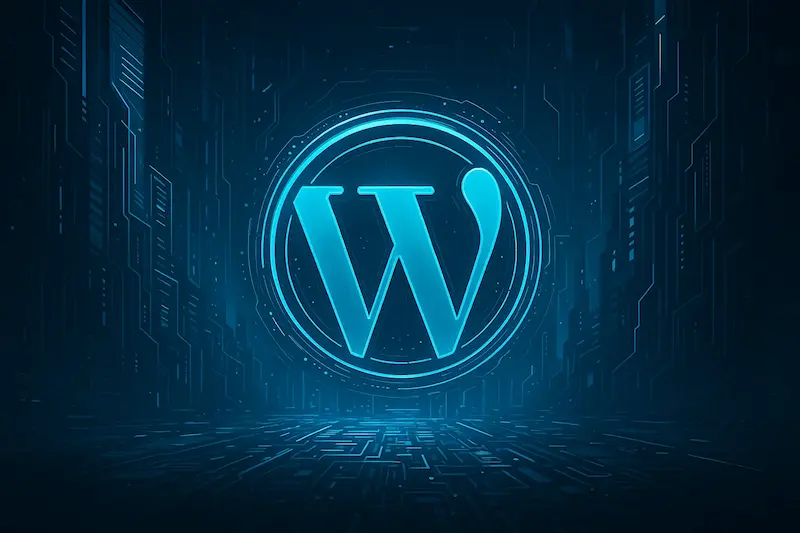
WordPress Multisite Overview
WordPress Multisite is a powerful feature that allows you to run multiple WordPress websites from a single WordPress installation.
Pros and Cons of Multisite vs. Single Instance:
- Multisite Pros: Centralized updates for themes and plugins across all franchise websites, ensuring security and consistency. Easier to enforce brand guidelines. Streamlined management for the head office. Potentially lower maintenance costs for managing many sites.
- Multisite Cons: More complex initial setup and configuration. Some plugins may not be fully compatible with a multisite environment. A problem with the central installation can affect all sub-sites.
- Single Instance: This is a more straightforward setup for one website. However, managing dozens or hundreds of individual franchisee websites becomes a logistical nightmare without a multisite or similar centralized system.
- User Roles and Permissioning for Scalability: WordPress allows for granular user roles. In a franchise setup, the franchisor’s team can have administrator access to the entire network. In contrast, individual franchisees can have editor or contributor roles limited to their specific location’s content, ensuring brand compliance.
Must-Have Plugins for Franchise Web Design
The WordPress ecosystem thrives on its vast array of plugins. Specific plugins are indispensable for franchise web design.
- SEO Plugins: Yoast SEO or Rank Math are critical for on-page SEO, sitemap generation, and schema markup, ensuring your franchise websites are search engine-friendly.
- Forms Plugins: Use WPForms, Gravity Forms, or Contact Form 7 to create robust lead generation and contact forms. Look for integration with CRM systems.
- CRM Integration Plugins: Plugins that connect your WordPress website forms and data directly to your CRM (e.g., Salesforce, HubSpot) are essential for lead management.
- Security Plugins: Wordfence, Sucuri, or iThemes Security to protect your website from malware, brute-force attacks, and other threats.
- Performance Plugins: Caching plugins (e.g., WP Super Cache, W3 Total Cache) and image optimization plugins (e.g., Smush, Imagify) are vital for improving website speeds and Core Web Vitals.
- Location Management and Locator Tools: Plugins designed to manage multi-location businesses, offering store locators, mapping features, and location-specific content management.
Theme Considerations
The WordPress theme determines the visual look and feel of your website.
Custom Theme vs. Premium Theme vs. Child Theme:
- Custom Theme: Developed from scratch, offering ultimate flexibility and tailored precisely to your brand’s needs and business goals. Often the best long-term investment for large franchise brands.
- Premium Theme: A purchased, pre-built theme. It can be a good starting point, but may require significant customization to meet unique franchise requirements and maintain perfect brand consistency.
- Child Theme: If using a premium theme, always create one. This allows you to make modifications without losing your changes when the parent theme updates, preventing breakage.
Custom Blocks/Components for Location Pages: Leverage WordPress’s Gutenberg editor with custom blocks or use page builders like Elementor or Divi to create reusable components for location pages. This ensures consistency while allowing franchisees to add their specific content easily.
WordPress Maintenance & Security
A website is an ongoing project, not a one-time deployment. Regular maintenance and robust security are crucial.

- Regular Updates, Backups, Hardening Strategies: To patch vulnerabilities and keep WordPress core, themes, and plugins updated to the latest versions. Implement regular, automated backups. Use security hardening strategies like strong passwords, limiting login attempts, and using a security plugin.
- Monitoring Uptime, Plugin Compatibility: Continuously monitor your website’s uptime. Before updating plugins or themes, test compatibility to avoid breaking the site.
- Security Audits: Conduct periodic security audits to identify and address potential weaknesses.
Future-Proofing: Advanced Tactics & Trends
The digital landscape is constantly evolving. Staying ahead of the curve is essential for long-term success in franchise web design.
Personalization at Scale
Delivering tailored experiences to each user can significantly boost engagement and conversions.
- Content Tailoring Based on Geo/IP Data: Show specific promotions, events, or product offerings based on the user’s detected location or IP address.
- Behavioral Triggers and Smart Content Blocks: Display dynamic content based on a user’s past interactions with your site, search history, or demographic information.
AI in Franchise Web Design
Artificial Intelligence (AI) is transforming web design and content creation.
Chatbots, AI Copy Generation, Predictive UX:
- Chatbots: Advanced AI chatbots can handle more complex queries, offer personalized recommendations, and even qualify leads more efficiently.
- AI Copy Generation: AI tools can assist in generating initial drafts of content for location pages or blog posts, saving time and ensuring a consistent tone.
- Predictive UX: AI can analyze user behavior data to predict what a user might need next, dynamically adjusting the website layout or content to provide a seamless experience.
Voice Search & Conversational SEO

With the rise of smart speakers and voice assistants, optimizing for voice search is becoming increasingly important.
- Long-Tail, Natural Language Optimization: People speak differently than they type. Optimize your content for longer, conversational queries (e.g., “What’s the nearest [brand name] [service] to me?”).
- Structured Data to Support Voice Results: Schema markup (as discussed earlier) helps search engines understand your content contextually, making it more likely to be selected for voice answers.
Immersive & Interactive Features
Engaging users with richer experiences can enhance brand recognition and engagement.
- AR/VR, Virtual Walkthroughs, Interactive Maps: Augmented Reality (AR) or Virtual Reality (VR) experiences can offer immersive product previews or virtual tours of franchise locations. Interactive maps can provide more than just directions; they can show nearby attractions or other points of interest.
Hyperlocal Marketing Integration
Going beyond just a local page, integrating deeply with local communities.
- Events, Sponsorships, Partnerships Localized via Web: Use your website to highlight specific local events your franchise location is sponsoring or participating in. Feature local partnerships and charities to build stronger community ties.
Final Thoughts on Franchise Web Design
Franchise web design is a nuanced and dynamic field. It’s not simply about building a website; it’s about crafting a digital ecosystem that balances a unified brand presence with the distinct needs of each franchise location. The success of a multi-location brand hinges on this delicate equilibrium.
By prioritizing a robust, SEO-first architecture, investing in a scalable CMS like WordPress, focusing on national and local optimization strategies, and consistently delivering a superior user experience, franchisors and franchisees can achieve remarkable business growth. Remember, the right franchise web design is not a one-size-fits-all solution; it’s a carefully tailored strategy that fuels long-term success and reinforces your brand’s stature in a competitive world.
Do you need help with franchise web design that truly performs and scales with your business growth? Let’s discuss how our expertise can give your brand the online advantage it deserves.
